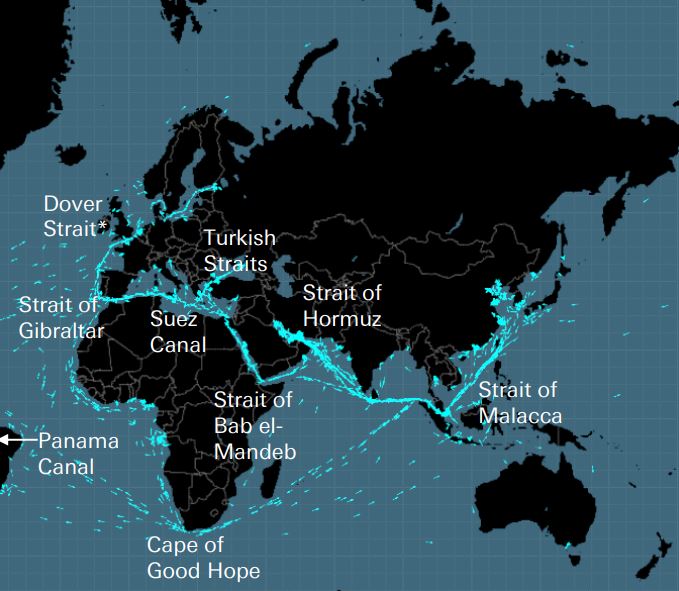
Kabel, Pipelines, Straßen, Meerengen, Flugrouten und Satelliten bilden das fragile Netzwerk, auf dem die Weltwirtschaft aufbaut. Dabei handelt es sich um unsichtbare Netzwerke von enormer Bedeutung für die globale Lieferkette und das moderne Leben, an die man sich jedoch erst erinnert, wenn ein Krieg wie in der Ukraine oder in Israel einen dieser strategischen Punkte bedroht. Studie der Deutschen Bank beleuchtet die fünf Schwachstellen der Weltwirtschaft. Das heißt, die Infrastrukturen, die nicht durch Alternativen ersetzt werden können und daher die globale Lieferkette blockieren können.
Es gibt einige Schwachstellen in der Weltwirtschaft, die mehr oder weniger jedem bekannt sind, wie etwa Taiwans Halbleiterfabriken, globale Finanzzentren und die 0,5% der U-Bahn-Stationen in London und Paris, die das halbe Netz blockieren könnten.
Doch es gibt auch unsichtbare, aber sehr wichtige Netzwerke, wie die Beschädigung einer Untersee-Gaspipeline und eines Telekommunikationskabels zwischen Finnland und Estland am 10. Oktober zeigte, die an die Sabotage der Nord-Stream-Pipeline vor einem Jahr erinnert. Im Jahr 2010 legte der Ausbruch eines Vulkans in Island den europäischen Flugverkehr acht Tage lang lahm, wie die Deutsche Bank berichtet.
Sowohl die Ukraine als auch Israel liegen in der Nähe solch wichtiger Punkte für die Weltwirtschaft.
– Datenkabel: Bis zu 991 Milliarden US-Dollar der weltweiten digitalen Kommunikation sowie 10 Billionen US-Dollar Finanztransaktionen laufen über Glasfaserkabel auf dem Meeresboden. Rund 550 aktive und geplante Kabel mit einer Gesamtlänge von 1,4 Millionen Kilometern sind bereits im Einsatz. Viele sind kaum dicker als eine Gießkanne, erklärt die Deutsche Bank. Diese Kabel sind anfällig für Spionage, Sabotage und versehentliche Beschädigungen.
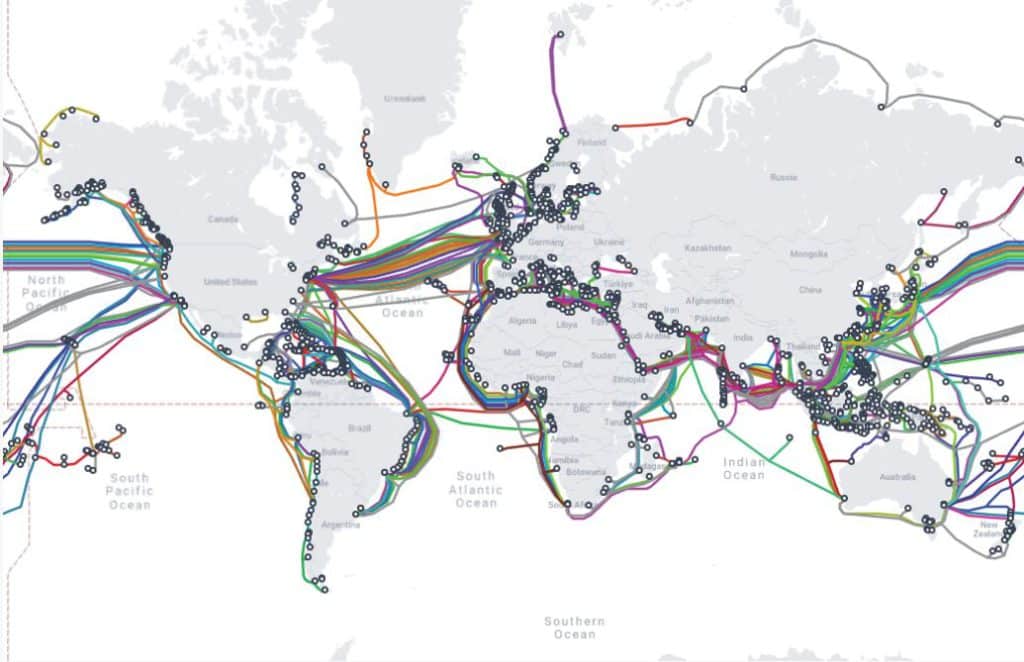
– Unterwasserstromkabel: Stromverbindungsleitungen ermöglichen es Ländern, bei günstigerem Wetter billigere Wind- oder Solarenergie von ihren Nachbarn zu kaufen, was die Versorgungssicherheit erhöht und die Nachfrage besser steuert. Sie können jedoch durch Sabotage oder Unfall zerstört werden.
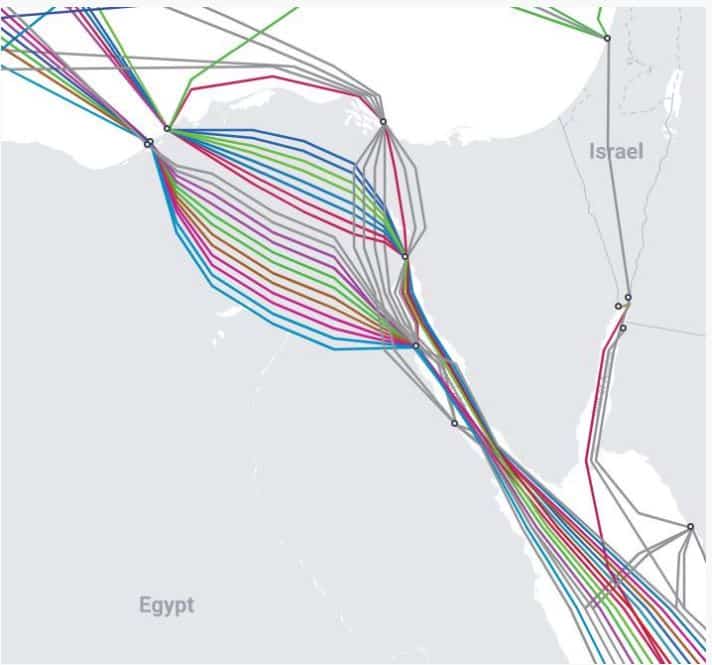
– Erdgasleitungen: Europa ist für den Großteil seiner Erdgaslieferungen auf Pipelines angewiesen. Im Jahr 2020 importierte das Unternehmen fast 401 TP3T seines Erdgases aus Russland und ist seitdem auf Pipelines aus Norwegen und importiertes LNG angewiesen. Wie die Nord Stream-Explosionen gezeigt haben, sind diese Pipelines anfällig für Sabotage.
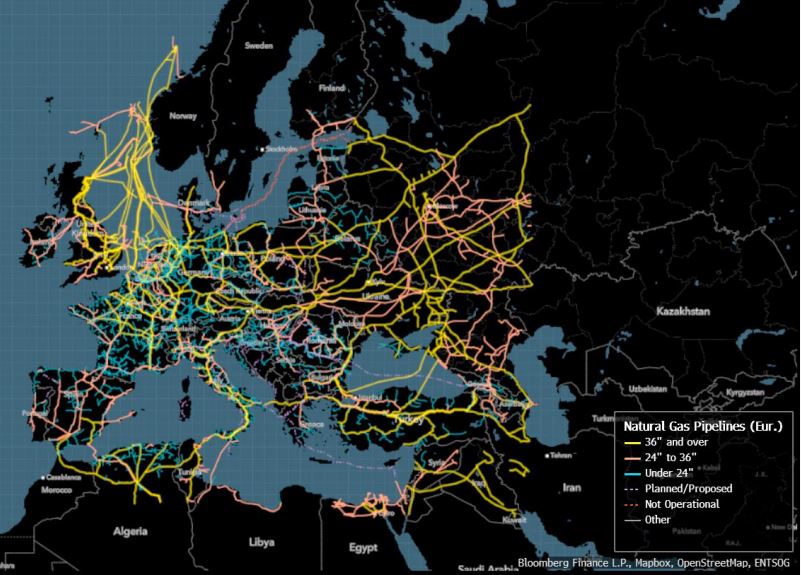
– Ölpipelines: Die meisten Ölpipelines der Welt befinden sich in Europa und Asien und beginnen in Russland. Eine typische Ölpipeline hat einen Durchmesser von etwa 50 Zentimetern und kann über 1 Million Liter (oder 6.300 Barrel pro Stunde) transportieren. Zum Vergleich: Ein Barrel kann weniger als 200 Barrel gleichzeitig transportieren. Pipelines bestehen aus Stahl und werden, wenn möglich, im Boden verlegt. Wie Erdgaspipelines sind sie anfällig für Schäden, Erdbeben und Sabotage.
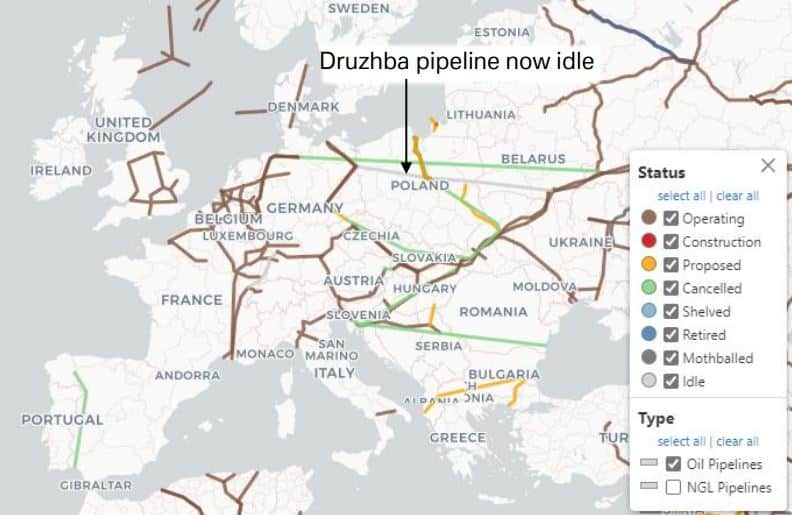
Über Eisenbahnstrecken und Straßen in entlegenen Regionen wird ein überproportional großer Teil der für die Weltwirtschaft wichtigen Güter transportiert, ohne dass es Alternativen gibt. Ein riesiges Gebiet im Kongo und Sambia beispielsweise ist Afrikas größter Kupferproduzent und deckt zwei Drittel der weltweiten Kobaltproduktion ab. Doch es gibt nur vier Straßen – allesamt schlecht und überlastet –, um diese Rohstoffe von den Minen zu den Häfen in Namibia, Südafrika, Mosambik und Tansania zu transportieren. Ähnliches gilt für Brasiliens Soja, den weltweit größten Exporteur. In den letzten zwei Jahren haben Dürren wichtige Flüsse heimgesucht, was zeigt, wie anfällig diese Transportwege sind.
Neben dem Kap der Guten Hoffnung gibt es acht wichtige „Meerengen“ für den Seetransport. Wie die Deutsche Bank erklärt, sind dies die fünf „Schlüssel, die dem Britischen Empire die Welt öffneten“, wenn man die Straße von Dover abzieht und den Panamakanal, die türkische Meerenge, die Straße von Bab el-Madeb und die Straße von Hormus hinzuzählt. Im Ölbereich beispielsweise werden mehr als 601 TP3T Öllieferungen auf dem Seeweg transportiert, wobei die Straße von Hormus der wichtigste Punkt für den Markt ist, da ein Fünftel des weltweiten Verbrauchs (und ein Drittel des Flüssigerdgases) durch sie hindurchgeht. An ihrer engsten Stelle ist die Straße von Hormus nur 33 Kilometer breit.

Diese Meerengen sind anfällig für Blockaden, Schiffskollisionen oder -berührungen, Piraten, Terroranschläge, Kriege und Unfälle wie Ölverschmutzungen.
Der Luftverkehr ist auf ein unsichtbares Netzwerk von Korridoren angewiesen, das durch Wetter, Kriege oder außergewöhnliche Ereignisse gestört werden kann. So wurde beispielsweise im vergangenen November der spanische Luftraum gesperrt, um einer chinesischen Rakete den Eintritt in die Erdatmosphäre zu ermöglichen. Streiks der Fluglotsen haben in diesem Jahr in Europa zu erheblichen Verkehrsproblemen geführt. Die größte Flugverkehrsblockade der Nachkriegszeit ereignete sich 2010 beim Ausbruch des Vulkans in Island.
Die Welt ist stark vom US-amerikanischen Global Positioning System (GPS) abhängig. Dieses nutzt rund 30 Positioning-, Navigations- und Zeitmesssatelliten (PNT), die die Erde umkreisen und Signale an über 4 Milliarden Nutzer weltweit senden. Diese Signale sind jedoch schwach und störungsanfällig. Schätzungen zufolge würden die Kosten einer Abschaltung des GPS allein für die USA täglich über 1 Billion Pfund Sterling betragen.
(QUELLE: https://www.moneyreview.gr/business-and-finance/125480/deutsche-bank-ta-aorata-diktya-poy-kinoyn-tin-pagkosmia-oikonomia-oi-5-adynamoi-krikoi/)




Finden Sie alle Top-Anbieter von Produkten und Dienstleistungen für die Schifffahrtsnavigation für eine sichere Seereiseplanung